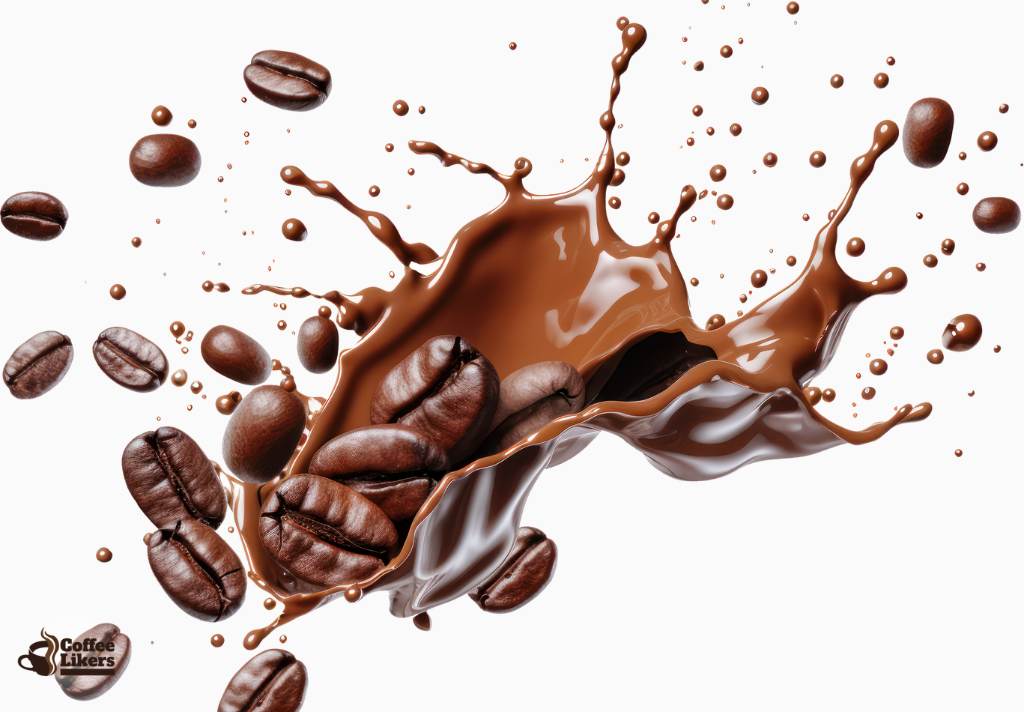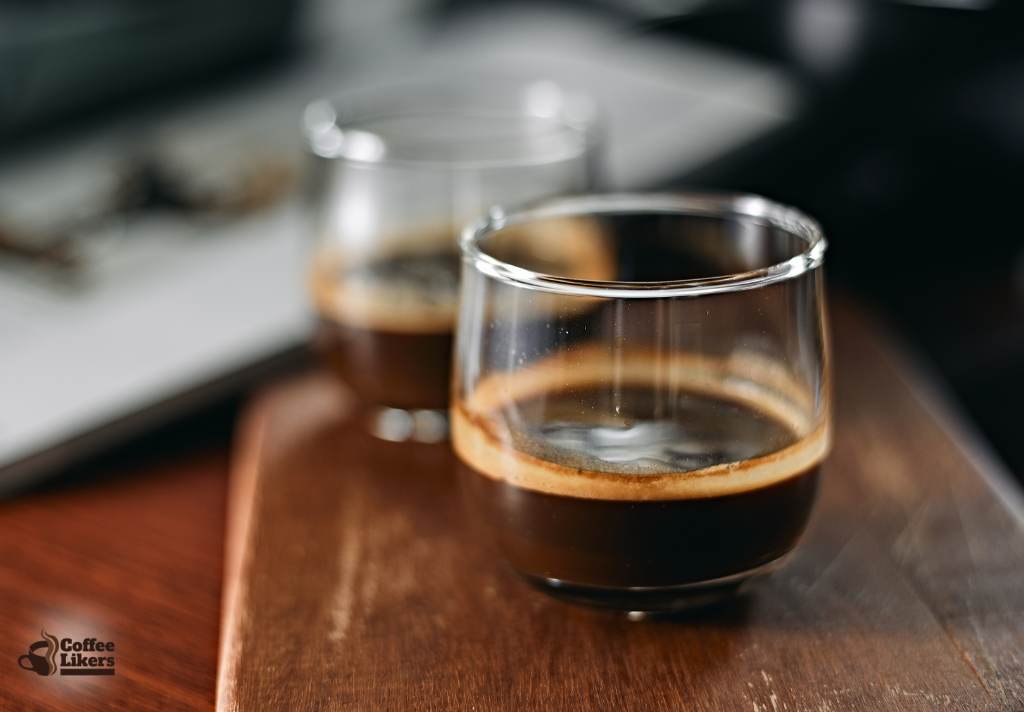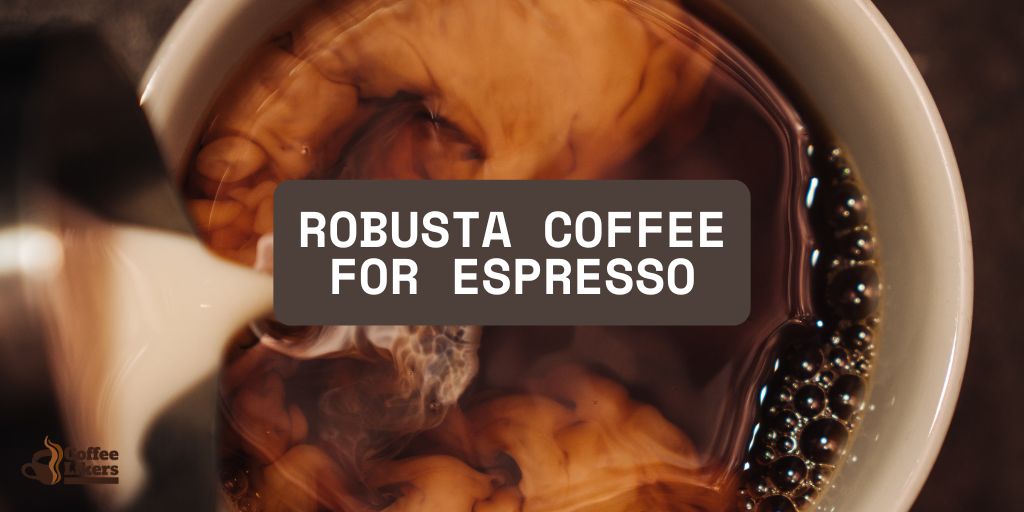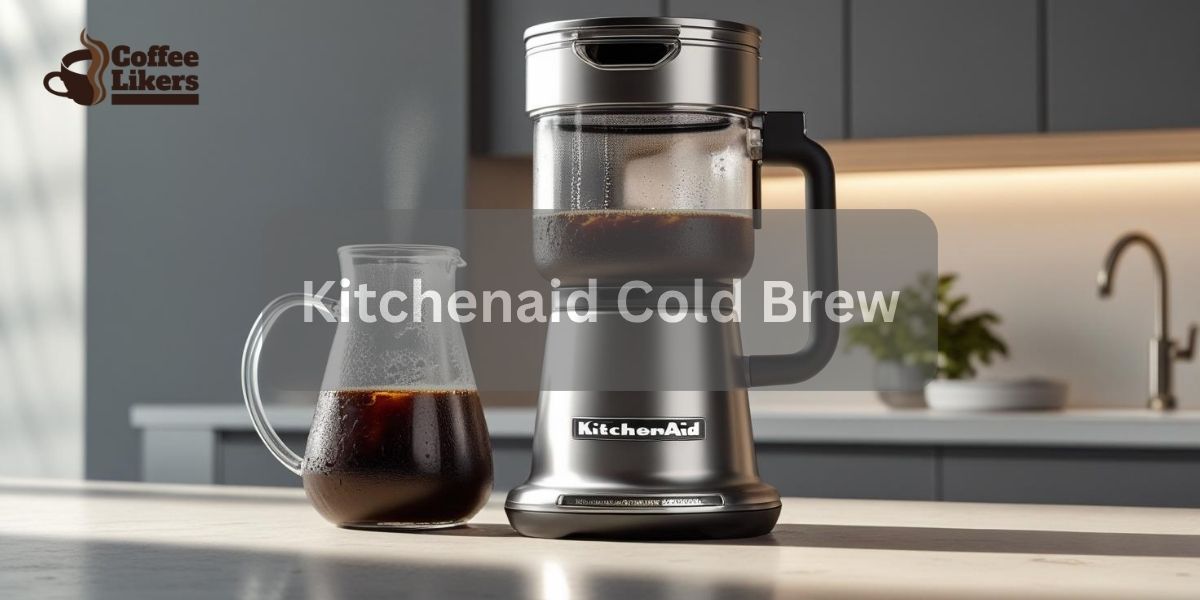Although robusta coffee is less popular than Arabica, it has a strong and unique flavor that can improve espresso. Its bold, earthy taste and higher caffeine content make robusta beans special in the espresso world. This guide will show you how to use robusta coffee for espresso, including how to choose the right beans and brew a great cup.
If you love coffee and want to make your espresso taste even better, robusta beans could be the answer. With their rich and intense flavor, robusta beans can add depth to your espresso shots. This article will explore robusta coffee and how you can use it in your espresso routine.
We will cover everything from selecting the best beans to perfecting the brewing process. Sit back, relax, and get ready to improve your espresso game with robusta coffee. This article discusses the benefits of robusta coffee and offers tips on how to enhance your espresso experience with this unique and flavorful bean.
Is Robusta coffee good for espresso? Yes, Robusta coffee is good for making espresso. It has a lot of caffeine, so it makes a strong and intense espresso with a thick layer on top. Robusta coffee has a flavor that is chocolatey and nutty, with a bit of bitterness. Mixing it with other types of coffee can make the espresso more interesting and flavorful.
Robusta Coffee For Espresso: Brief Description
Robusta coffee comes from the robusta coffee plant, also known as the Coffea canephora plant. It has a strong taste and lots of caffeine. When you use robusta beans in espresso, they make a taste that is bold, nutty, and chocolatey. It also has a slight hint of bitterness. Robusta coffee is less sour than Arabica, so it feels thicker.
This makes it popular with people who like strong coffee. An increasing number of people are incorporating Robusta beans into their espresso blends. They like the special qualities these beans bring. One important feature is how they make a creamy layer on top of an espresso shot, called crema. Espresso fans enjoy this.
Robusta Espresso Beans
When choosing robusta beans for espresso, it’s best to choose a dark roast. This kind of roast softens the robusta’s strong flavors, giving you a smoother and better-balanced espresso shot. Some people like pre-ground coffee because it is easy to use. However, using freshly ground whole beans improves the flavor a lot.
Robusta coffee beans stay fresh and keep their smell longer, which helps make a tastier espresso. You should buy a good burr grinder to grind the beans just before making your coffee. The size of the grind is very important for espresso. A fine and even grind is necessary for getting a great shot.
Best Robusta For Espresso
Finding good robusta beans is important for a tasty espresso. Nguyen Coffee Supply is a good place to start. They focus on Vietnamese robusta beans and have different single-origin choices. Another well-known option is Death Wish Coffee. They are famous for their dark roast robusta blends that have a strong caffeine kick.
If you like a milder flavor, you might want to try a medium roast robusta from a trusted roaster. Look for beans from good sources like Vietnam, India, or Indonesia. Try different roasts and origins to find the robusta espresso that you like best.
Best Robusta Coffee Brands
Choosing the right robusta coffee brand can make a big difference in your espresso experience.
Consider these things:
- Origin: Vietnamese and Indonesian robustas have bold, earthy flavors.
- Roast: Choose a dark roast for a smoother, less intense taste.
- Ethics: Look for brands that care about fair trade and sustainability.
Here are three good brands to think about:
| Brand | Origin | Roast Level | Notes |
| Nguyen Coffee Supply | Vietnam | Medium-Dark | Notes of chocolate, nuts, and spice. Ethically sourced and roasted in small batches. |
| Death Wish Coffee | India | Dark | Intense and bold, with high caffeine. Fair Trade and USDA Organic certified. |
| Lavazza (Robusta blend) | Blend | Medium-Dark | A mix of Arabica and Robusta beans for a balanced flavor with a rich crema. |
Robusta For Espresso Recipe
For a robust espresso experience, try this recipe using Robusta espresso beans: Start by grinding the beans to a fine consistency suitable for an espresso machine. Use a 1:2 coffee-to-water ratio for a strong flavor.
Opt for a dark roast to enhance the robusta’s boldness. Pull a double shot of espresso, aiming for a rich crema on top. Enjoy the intense flavor profile with hints of dark chocolate and a robust finish.
Experiment with different espresso-based drinks like lattes or cappuccinos to explore the versatility of Robusta. Elevate your espresso game with the high caffeine content and strong taste of Robusta beans.

What Is Robusta Coffee And How Does It Differ From Arabica?
Robusta coffee, also known as Coffea canephora, is a type of coffee that is widely produced around the world. It is different from Arabica coffee in a few important ways.
One noticeable difference is in their flavors. Robusta beans have a strong and bold taste that many people describe as earthy, nutty, and chocolatey, with some bitterness.
In contrast, Arabica beans are recognized for their smooth and complex flavors. They have fruity, chocolate, and caramel notes.
Robusta coffee also contains more caffeine than Arabica. This higher caffeine content is due to robusta beans having more caffeine molecules, making it a good choice for those in need of an energy boost.
The Benefits Of Using Robusta Coffee For Espresso
Using robusta coffee for your espresso can make your coffee experience better in a few ways. First, robusta beans have more caffeine. This means your espresso shot will be stronger and more energizing. If you need a morning boost or an afternoon pick-me-up, robusta espresso gives you a great caffeine kick.
Second, robusta coffee has less acidity than Arabica coffee. This is beneficial for those with sensitive stomachs. Less acidity means you can enjoy a smoother cup of espresso that is easier on your stomach.
Lastly, robusta coffee is known for making a rich, thick crema. The crema is the smooth, golden layer that forms on top of a freshly pulled espresso shot. It shows that the espresso is well-made and adds to your drinking experience. Because of these reasons, robusta beans are a popular choice for people who love espresso.
The Flavor Profile Of Robusta Coffee In Espresso
Robusta coffee tastes strong when made into espresso. It is different from Arabica coffee. People say it has an earthy, nutty, and chocolatey flavor. It also has hints of dark chocolate and a bit of bitterness.
Some may not like the bitterness. But in espresso, it can be a good thing. It adds more flavor. Robusta has less acidity than Arabica. This gives the espresso a thicker, richer mouthfeel. The intense flavor of robusta espresso is loved by coffee enthusiasts who prefer a stronger cup.
Understanding The Caffeine Content In Robusta Coffee
Robusta coffee is well-known for having a lot more caffeine than Arabica coffee. Robusta beans have nearly double the caffeine, making them a top choice for those seeking a powerful kick from their coffee beverages.
The higher caffeine content in robusta beans is due to having more caffeine molecules. Caffeine levels can vary with roasting and brewing methods, but Robusta typically contains 2.5% to 4.5% caffeine. In comparison, Arabica beans have about 1.5% to 2% caffeine.
This is why robusta is commonly used in strong coffee blends and energy drinks for individuals looking for an extra boost to start their day. It’s important to consume robusta coffee in moderation, as excessive caffeine intake can lead to side effects such as anxiety, restlessness, and trouble sleeping.

Factors To Consider When Choosing Robusta Coffee For Espresso
When picking robusta coffee for espresso, there are a few important things to think about. First, consider the roast level you like. Robusta beans are usually roasted darker than Arabica beans. This helps soften their strong flavors.
A medium to dark roast is an excellent option for making espresso. It gives a good mix of boldness and smoother tastes. Next, think about how much caffeine you want. Robusta beans contain higher caffeine levels compared to Arabica beans.
So, if you react strongly to caffeine, you might want to pick a mix that has robusta and some coffee with less caffeine. Finally, focus on quality and freshness. Whole-bean robusta coffee is a better option than ground coffee because it stays fresh and flavorful for longer.
Tips For Brewing The Perfect Espresso With Robusta Coffee
Brewing espresso with robusta beans needs careful attention to get the best flavors. An important step is to use a fine and even grind size. Robusta beans are heavier than Arabica, so you need a finer grind for good flavor.
To ensure a consistent grind, get a good burr grinder. This is essential for crafting a flavorful and well-balanced espresso shot. Then, monitor the brewing time closely. Robusta espresso brews faster than Arabica because it dissolves more easily.
Aim for a 25 to 30-second brew time for a double shot, adjusting slightly to suit your taste preferences. Lastly, experiment with the brewing pressure. The typical pressure for making espresso is around 9 bars.
However, you can try using a lower pressure when brewing with robusta beans. This can result in a smoother, less bitter espresso shot.
How To Balance The Strong Flavor Of Robusta In Your Espresso Blend?
Balancing the strong taste of robusta in your espresso blend requires careful thinking. To make a delicious cup, try mixing robusta beans with Arabica coffee. The sweeter taste of Arabica helps reduce the strong and bitter flavors of robusta, creating a smoother espresso with more depth.
Experiment with different amounts of robusta and Arabica to discover your preferred taste. You can also improve the flavor by changing the roast level of the robusta beans. A darker roast can mellow out harsh notes of robusta, giving you a gentler and more enjoyable cup.
Blending Robusta And Arabica For A Balanced Espresso
Blending robusta and arabica beans, including those sourced from Asia, is a skill that helps coffee lovers create special espresso blends just for them. Each type of coffee has its unique qualities. It’s important to find the right mix to make a great-tasting espresso.
Typically, robusta beans are added to espresso blends as a secondary choice, while arabica beans are the main part. Robusta has a strong flavor that can easily cover up the softer flavors of Arabica.
A good starting mix is 70% arabica and 30% robusta. This mix brings out the sweet, tangy, and rich flavors of arabica while also giving the boldness, creamy texture, and caffeine boost from robusta.

Pairing Robusta Espresso With Milk-Based Drinks
Robusta espresso has a strong taste and a thick layer on top. It goes well with milk drinks, making them taste even better. The strong flavor of robusta can go well with the creamy sweetness of milk. Rewrite this text: This balance is great for drinks like lattes and cappuccinos.
Robusta also has a lot of caffeine. This extra caffeine mixes well with milk to make a strong and enjoyable coffee drink. The intense flavor of robusta stands out even when mixed with milk. It adds more richness to the drink. The thick layer on top of robusta makes milk drinks smooth and pleasing to the eye.
Common Misconceptions About Robusta Coffee In Espresso
Robusta coffee is getting more popular, but there are still some misunderstandings about it. A common misconception is that robusta coffee is low quality and only suitable for use in instant coffee blends. This idea ignores the fact that high-quality robusta beans are grown carefully. This can lead to tasty and aromatic coffee.
Another belief is that robusta coffee is too bitter and does not have the depth of arabica coffee beans. While it is true that robusta has a stronger taste, proper roasting and brewing can reduce bitterness. This helps bring out different flavors like chocolate, nuttiness, and even some sweetness in the coffee.
Exploring Different Roasting Profiles For Robusta Coffee
Exploring different ways to roast robusta coffee is important to discover its full flavor. The roasting process affects how the coffee tastes. Robusta coffee has a strong, natural flavor, so roasting it carefully is crucial.
A light roast can highlight robusta’s boldness, resulting in a cup with strong, earthy, and nutty flavors. A medium roast can create a balanced taste, showing hints of chocolate and caramel along with the coffee’s natural strength.
Many people prefer a dark roast for robusta because it can mellow out the strong flavors, resulting in a smoother cup with hints of smoky, bittersweet chocolate and roasted nuts.

Sustainability And Ethical Considerations When Choosing Robusta Coffee
In recent years, being sustainable and ethical in the coffee industry has become more important. When you pick robusta coffee, it’s crucial to consider these values.
Look for labels like Fair Trade and Rainforest Alliance. They show that the coffee is made in a way that is good for people and the planet. These labels support fair pay and safe work for farmers and help protect nature in coffee-growing areas.
Also, consider buying from coffee roasters and brands that work directly with farmers. Direct trade builds trust and clear connections in the supply chain. This way, farmers receive fair prices and have long-term relationships.
Experimenting With Different Brewing Methods For Robusta Espresso
Espresso is a popular way to make robusta coffee, but trying other ways can help you find new flavors. For example, using a French Press with a coarser grind than espresso can give you a tasty cup. This method brings out the strong, earthy, and chocolatey flavors of robusta.
The French Press needs to sit longer. This longer time helps get more flavor and caffeine. You can also try making cold brew robusta coffee. This method brings out a smoother taste that is less bitter, but still has a strong caffeine kick. Cold brewing means steeping coarsely ground coffee in cold or room-temperature water for 12-24 hours.
FAQ About Robusta Coffee For Espresso
What Type Of Coffee Is Best For Espresso?
The best coffee for espresso depends on what you like. Arabica beans are well-known for their smooth texture and rich, complex flavor profile. On the other hand, robusta beans give a stronger and bolder taste. They also have more caffeine. Many mixes use both types to create a nice balance of flavor.
Is Starbucks Espresso Arabica Or Robusta?
Starbucks mixes Arabica and Robusta beans for their espresso. The exact mix can change, but they usually focus on Arabica beans for their special espresso drinks. Robusta beans are added to enhance the flavor intensity and produce a thicker layer of crema.
Why Don’t Stores Like Robusta Coffee?
This is a misunderstanding. Some stores might prefer Arabica coffee because people like its flavor profile.
However, robusta coffee is becoming more popular. Many specialty coffee shops now offer robusta blends or single-origin robusta varieties. They show off their unique flavors and higher caffeine content.
What Are The Disadvantages Of Robusta Coffee?
Robusta coffee is renowned for its bold, intense flavor and significantly higher caffeine content compared to Arabica. Its earthy, sometimes nutty notes appeal to those who enjoy a strong, full-bodied cup.
However, its pronounced bitterness and lower acidity can be polarizing, with some coffee drinkers finding the taste too harsh or overpowering.
Final Thought
Robusta coffee is often not appreciated enough. It gives a bold and intense coffee experience, great for those who love espresso. If you learn about its unique features, brewing methods, and how it is sourced ethically.
You can enjoy all the benefits of this special bean. This knowledge will help you make a tasty and sustainable cup of espresso. Robusta coffee is a versatile and flavorful option for espresso lovers.
Choosing Robusta coffee for espresso adds intensity, depth, and a creamy crema to your daily coffee ritual. Its higher caffeine content and strong taste make it a great choice for those who enjoy a bold coffee experience.
By understanding the details of Robusta coffee and how it is sourced ethically, you can improve your espresso skills while supporting sustainable practices.





Leave a Reply